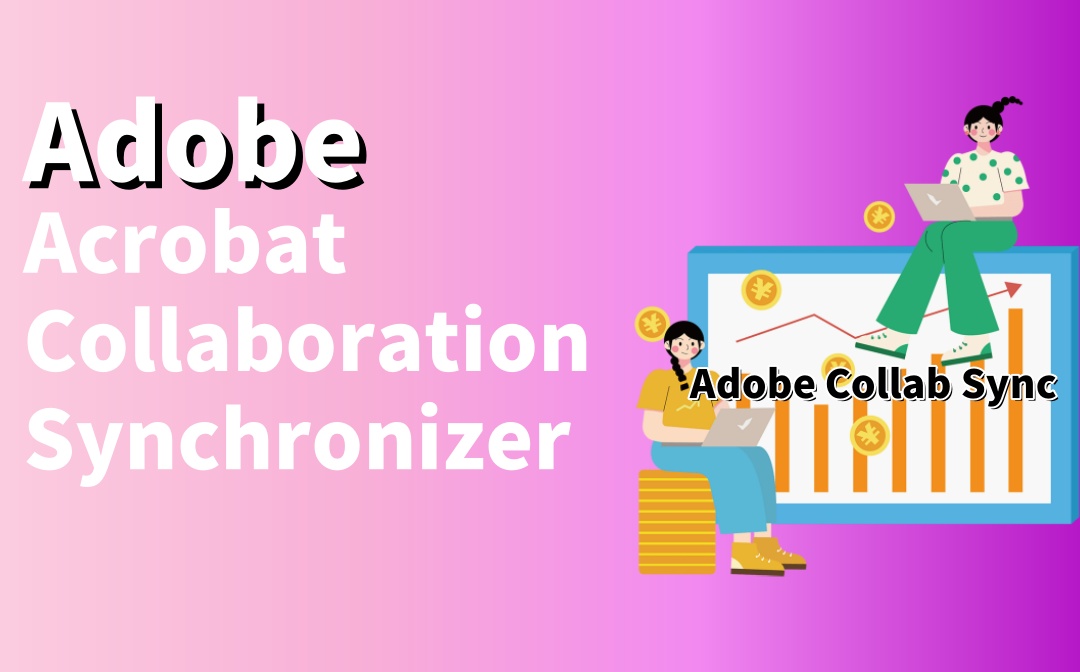
What Is Acrobat Collaboration Synchronizer?
Adobe Acrobat's Acrobat Collaboration Synchronizer, for Mac and Windows, is a background service. It helps support real-time collaboration, including shared reviews, online file syncing, and document commenting.
Also known as "adobecollabsync.exe" on Windows systems, this process runs silently to keep collaborative functions updated. Now you have learned what Adobe Collaboration Synchronizer is. Read on to learn about its purpose and find out if you need it.
What Does Acrobat Collaboration Synchronizer Do?
The Acrobat Collaboration Synchronizer process can perform many functions seamlessly. Here's a comprehensive list.
- Enables team members to work on the same document simultaneously
- Allows users to leave comments and feedback for others
- Saves all the document version histories for quick restoration
- Offers cloud-based storage to access documents from anywhere
- Integrated with other Adobe applications to enhance workflow efficiency
- Sends notifications and alerts to keep everyone updated about the edits and comments made by other users
- Allows adjusting access levels to protect any sensitive information
Do I Need Acrobat Collaboration Synchronizer on Startup?
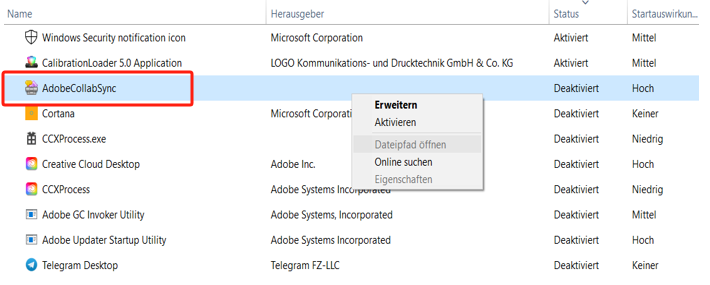
Whether you need Acrobat Collaboration Synchronizer on startup depends on how you use Adobe Acrobat. Adobe Collaboration Synchronizer on startup is necessary; otherwise, it is unnecessary for most users. It is primarily responsible for enabling collaboration features, such as syncing and sharing documents online. It does not impact core PDF viewing or editing functions. However, if you regularly collaborate on PDFs, keeping it enabled may offer quicker access to shared features.
To understand why you should disable Adobe Collab Sync, explore the next part for detailed guidance and performance benefits.
Why Do You Need to Disable Adobe Collab Sync?
Adobe Collab Sync is absolutely safe and convenient. However, there are still many issues leading users to disable it. Hence, you should disable Adobe Collaboration Synchronizer in the startup process. Alternatively, seek other methods to disable it for improved system performance.
Here are some of the plausible reasons to turn off Adobe Collaboration Synchronizer.
- It consumes high CPU and heavy system resources
- Not everyone works in a team or requires collaboration
- Real-time collaboration slows down the application, resulting in performance issues
- Requires a continuous internet connection for optimal functioning
- Members may have different versions of Adobe Acrobat and devices (PC or Mac)
- Limited offline functionality
- Requires adequate precautions to protect confidential and sensitive information
- New users may not work well with collaboration features
- Handling large files is complex and may slow down system performance
Acrobat Collaboration Synchronizer Disable Methods
Adobe uses the Acrobat Collaboration Synchronizer to sync shared reviews and collaborative features. Turning it off can help streamline system performance. It's typically safe to disable for most users, and it won't affect core PDF functions.
Here are the top 5 methods on how to disable Acrobat Collaboration Synchronizer.
1. Close the Process in Task Manager
Closing a process in Task Manager can free up system resources. Also, it can stop unwanted background programs. Check the steps to close the Adobe Collab Sync process in the Task Manager to improve performance.
Step 1: Launch the Windows Task Manager. Then, go to the “Details” pane.
Or, press the CTRL + ALT + Delete keys. This will open Task Manager's Details pane.
Step 2: Hit the “Processes” tab.
Step 3: Find AdobeCollabSync in the process list.
Step 4: Then, right-click and select “End Task.”
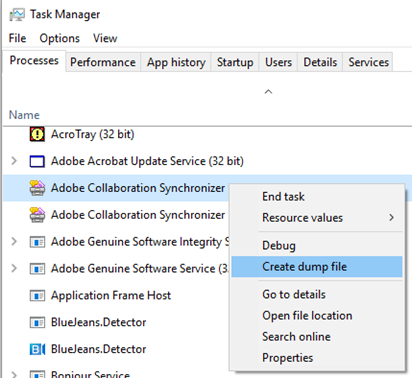
This will end or stop the Acrobat Collaboration Synchronizer process.
2. Delete adobecollabsync.exe File
Permanently removing Adobe Collaboration Synchronizer reduces background activity. Here's how to delete it and improve your system's performance.
Step 1: Open Windows File Explorer (press the Windows key + E).
Step 2: Move to the location below.
"C:\Program Files (x86)\Adobe\Acrobat DC\Acrobat\FullTrustNotifier.exe"
And delete the FullTrustNotifier file.

Step 3: Next, navigate to the location: "C:\Program Files (x86)\Adobe\Acrobat DC\Acrobat\AdobeCollabSync.exe" and delete the AdobeCollabSync file.
Step 4: This will remove Acrobat Collaboration Synchronizer and permanently disable it. Now, restart your PC. And see whether the changes have taken effect.
3. Pause Syncing via Creative Cloud
Many users also resort to pausing file syncing through the Creative Cloud. It can conserve bandwidth or prevent automatic file updates while you're working. Learn the quick process to pause file syncing.
Step 1: Open the Creative Cloud Desktop. And log in with your credentials.
Step 2: Hit the Cloud icon. And a pop-up window will appear.
Step 3: Click the Pause icon. It will be located next to the Creative Cloud Files Syncing. It will help you pause any file syncing.
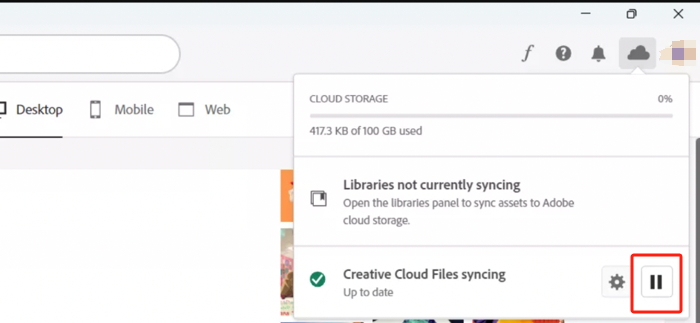
Note: Tap the "Cloud" icon to turn it on again. Then, press "Start." It is next to the "Creative Cloud Files Syncing" tab.
4. Disable Adobe Collab Sync Startup
Disabling Adobe Collab Sync Startup is also a viable option. This ensures it doesn't open automatically whenever your system boots. By doing so, you can also reduce startup time and minimize background processes. Find out the steps you can follow.
Step 1: Hit the Windows Start button.
Step 2: Then, type "Startup." And select "Startup Apps."
Step 3: Turn off AdobeCollabSync. It will disable the Acrobat Collaboration Synchronizer on startup on Mac or Windows.
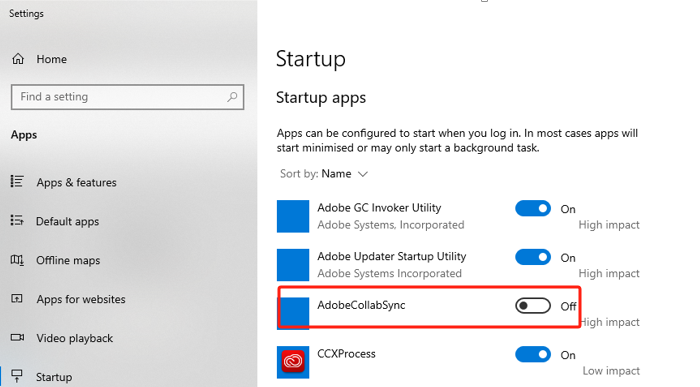
Note: If Acrobat DC receives an update, it'll reinstall a new copy of AdobeCollabSync.exe. So, you'll need to repeat the steps above.
5. Uninstall Adobe Acrobat
When none of the above solutions work, it is best to end Adobe Acrobat completely. It is similar to how you resolve: A running instance of Acrobat caused an error. To uninstall Adobe Acrobat, follow these steps.
Step 1: Quit Acrobat if it's running. Then, press the Windows key + R to open the Run command box.
Step 2: Type Control Panel and press OK.
Step 3: Select Programs and click Program and Features in the Control Panel.
Step 4: Select Adobe Acrobat from the list of installed programs. Click Uninstall. Select Yes in the confirmation dialog. Then, restart your system to apply the changes.

Bonus: A Simple and Smooth Adobe Acrobat Alternative
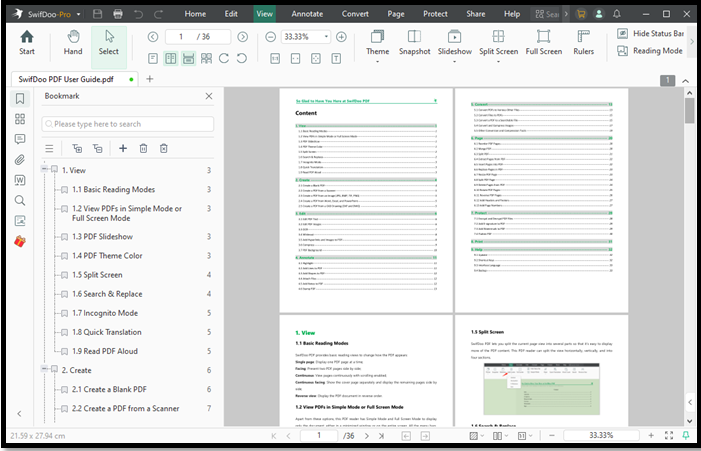
Adobe Collaboration Synchronizer is ideal for teams that collaborate in real-time. However, it may leave other users so frustrated that they may seek some reliable alternatives. While there are methods to disable it, users may find it painstakingly cumbersome. For instance, you can shut it down using the Task Manager, but this requires doing so each time you use it. However, Creative Cloud will continually push updates, which may include reinstalling this file.
You can avoid Acrobat Collaboration or Content Synchronizer issues once and for all by seeking a reliable PDF editor software. If you're looking for a different PDF suite to manage your PDF tasks, consider using SwifDoo PDF. It is an all-inclusive Adobe Acrobat alternative designed to handle PDF documents smoothly. It is a lightweight software that can streamline PDF processing efficiently.
Primary Features
- SwifDoo Cloud is available for file storage
- View, convert, edit, and annotate PDF documents
- Merge/split and losslessly compress PDFs for easy sharing and storage
- Digitally sign and password-protect PDFs for encryption
- Use SwifDoo AI to analyze, summarize, translate, proofread, rewrite, and do much more in one click
Conclusion
We hope you can understand how to do the Acrobat Collab Synchronizer disabling, whether the tool is necessary, and its use cases through this article. If you have nearly no need for syncing or managing documents on multiple devices, why not use Adobe Acrobat Alternatives? Alternative software saves you from the trouble in question and reduces your budget.








